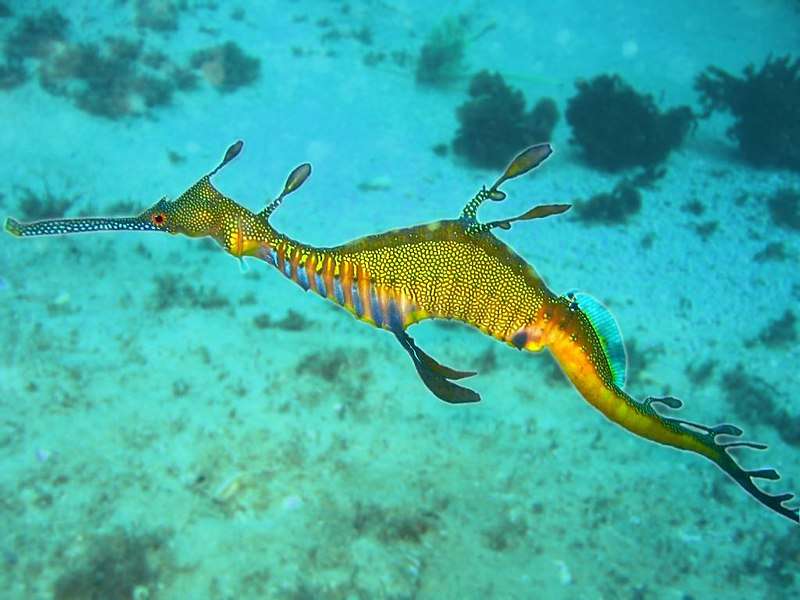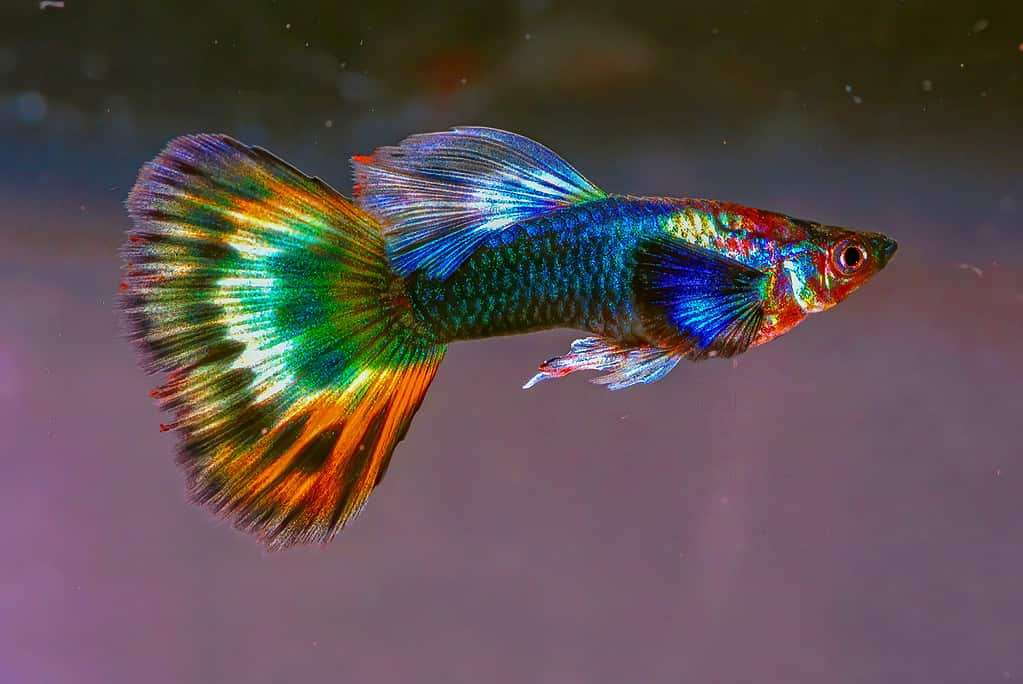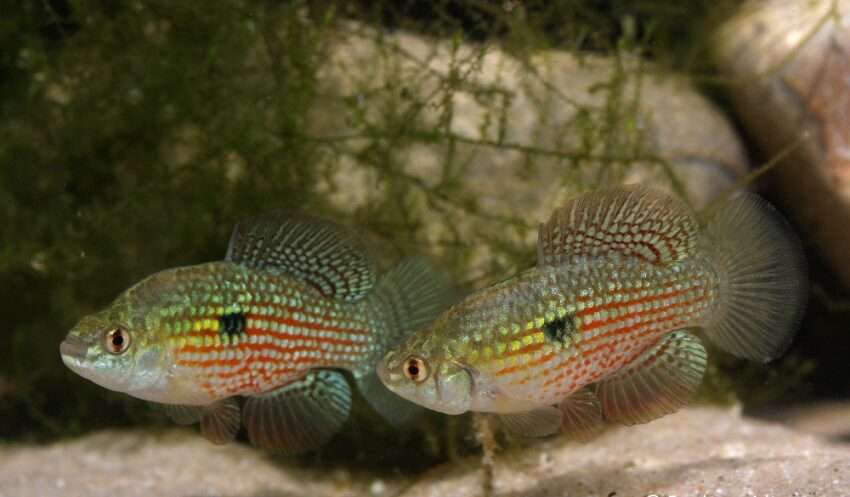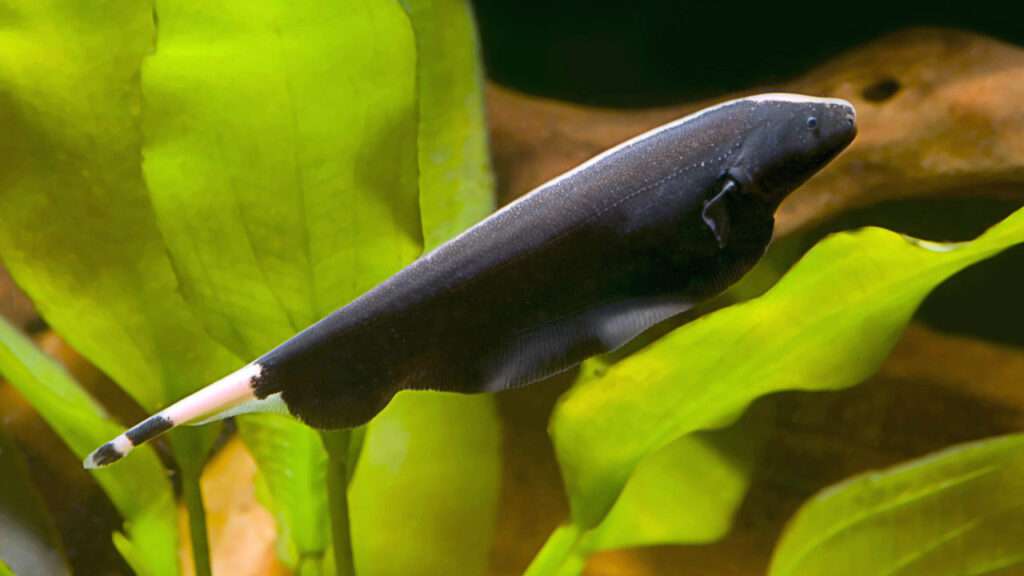
Size
Up to 20 inches
Physical Characteristics
With the exception of two white rings on its tail and a white blaze on its nose, which can occasionally turn into a stripe down its back, the fish is all black. A large fin on its underbelly that waves helps it move primarily.
Temperament
Inky Ghost Knifefish should be kept alone in a tank and not with any other knifefish species. They are typically amicable with other fish (those are large enough not to be eaten overnight), but they are territorial with their own kind and other knifefish.
Habitat
They are native to freshwater ecosystems in South America, especially the Amazon Basin, and range from Venezuela to the Paraguay-Paraná River. They are well-liked in aquariums.
Keeping as Pet
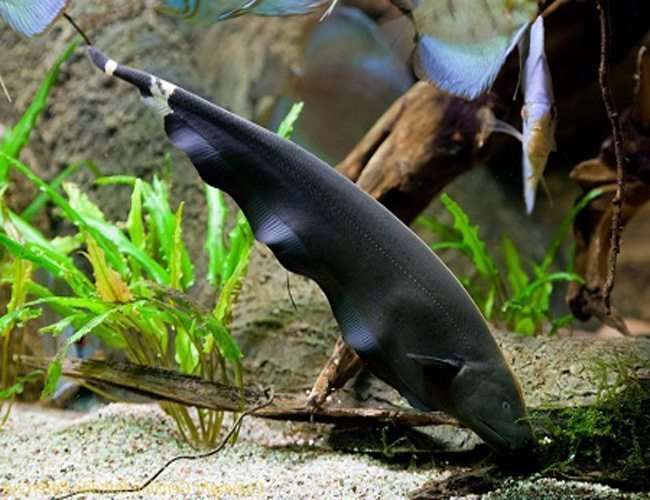
- Tank Size
One black ghost knife fish needs a tank that is 100 gallons in size minimum. These fish require a tank that can hold them because they can get fairly huge. A fish of this size kept in a smaller tank will become more aggressive and experience health problems as a result. All other care elements are built on having the proper tank size as their base.
You’ll need to make the tank bigger if you wish to keep several black ghost knife fish in the same aquarium. For each new fish you add, aim for an additional 80–100 gallons. The likelihood of them acting aggressively territorial towards one another will be reduced as a result.
- Water Parameters
These fish can actually tolerate a wide range of baseline water characteristics. This is due to the unclean conditions of their native habitat (hence their need to use electricity when finding food).
The water is between 73°F and 80°F.
pH levels: 6.5 to 8
Hardness of water: 0 to 10 KH
However even though the parameter windows are somewhat flexible, these fish are actually quite sensitive to inferior water conditions. Unlike other hardy species that can withstand average water quality, they cannot (even though you should never settle for it).
- Feeding
Black ghost knife fish should have a food that is fairly close to that found in their native environment. These fish, in contrast to several other species, frequently show strong resistance to switching to flake or pellet diets. We prefer to offer people what they want as a result. We’ve seen that the black ghost knife fish who have survived the longest have been fed a diet that is higher in natural protein.
You can use any of your favourite live or frozen foods (a variety is always recommended). Owners frequently utilize brine shrimp, prawns, bloodworms, and tubifex. You’ll have to work around the fish’s sleeping hours because they are nocturnal. The simplest approach to achieve this is to only feed them once each day, in the evening or at night (depending on your schedule).
- Tank mates
They are ideal for a communal aquarium despite the fact that they are regarded as semi-aggressive fish. Other tranquil fish of a similar size, such as calm cichlids or catfish, make an ideal community for this fish. If Black Ghost Knifefish are kept in small areas with insufficient hiding places, they will start to become hostile.
If maintained alongside animals of the same species or closely related species, they can also get rather boisterous. Make certain that any tank companions you add are at least 6 inches long and are calm. With calm catfish, angelfish, huge calm cichlids, discus, and corydoras, the ideal community can be built. Corydoras make excellent companions since they contribute to maintaining a clean aquarium.
Naturally, tankmates must share the same preferences for the quality of the water. This eliminates fish that prefer cooler waters, including goldfish. You might be able to keep your Black Ghost Knifefish among smaller fish like Guppies, Barbs, Tetras, and Rasboras while it is still a juvenile.
Table



